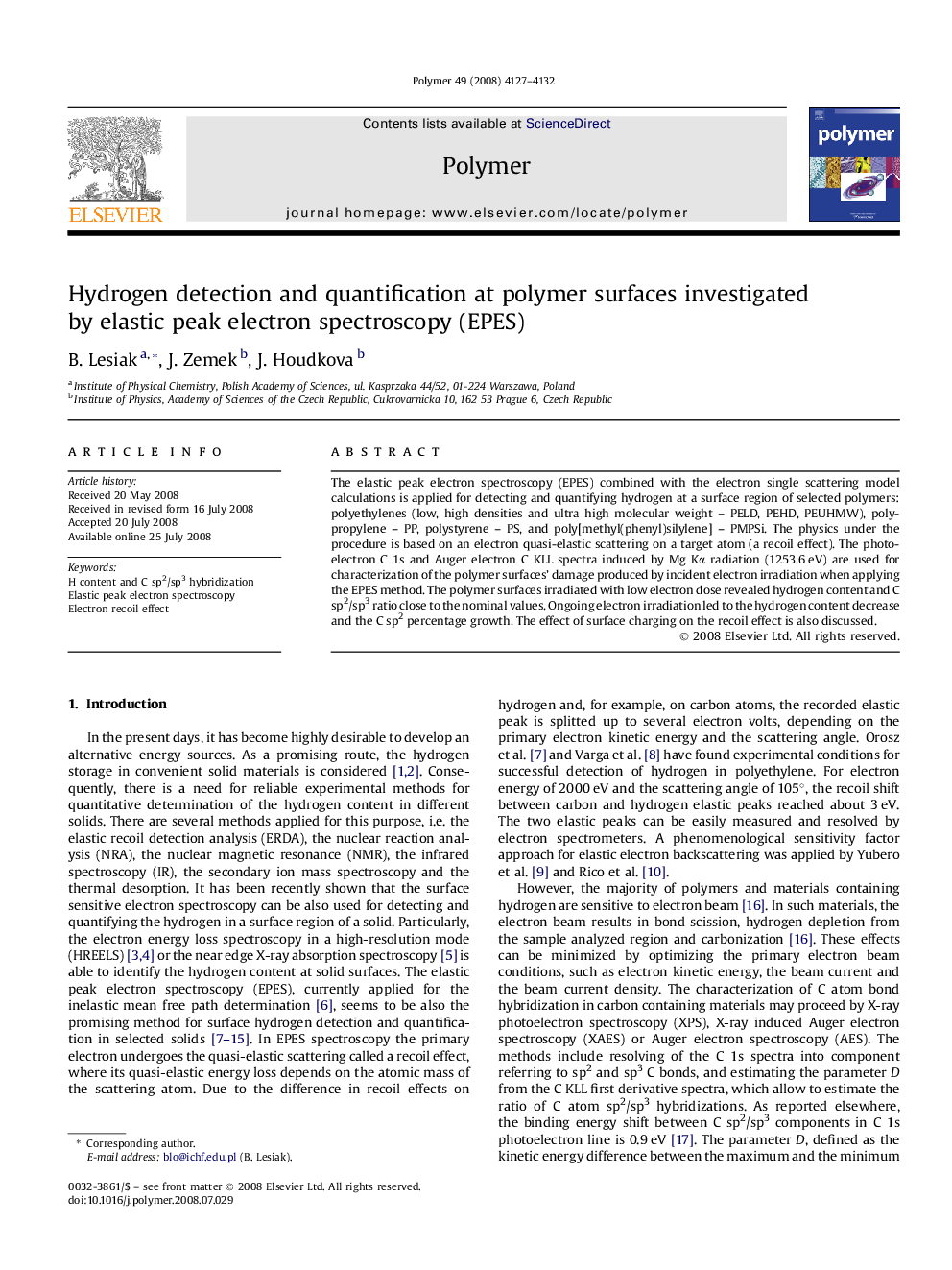| Article ID | Journal | Published Year | Pages | File Type |
|---|---|---|---|---|
| 5185279 | Polymer | 2008 | 6 Pages |
The elastic peak electron spectroscopy (EPES) combined with the electron single scattering model calculations is applied for detecting and quantifying hydrogen at a surface region of selected polymers: polyethylenes (low, high densities and ultra high molecular weight - PELD, PEHD, PEUHMW), polypropylene - PP, polystyrene - PS, and poly[methyl(phenyl)silylene] - PMPSi. The physics under the procedure is based on an electron quasi-elastic scattering on a target atom (a recoil effect). The photoelectron C 1s and Auger electron C KLL spectra induced by Mg Kα radiation (1253.6 eV) are used for characterization of the polymer surfaces' damage produced by incident electron irradiation when applying the EPES method. The polymer surfaces irradiated with low electron dose revealed hydrogen content and C sp2/sp3 ratio close to the nominal values. Ongoing electron irradiation led to the hydrogen content decrease and the C sp2 percentage growth. The effect of surface charging on the recoil effect is also discussed.
Graphical abstractDownload full-size image
